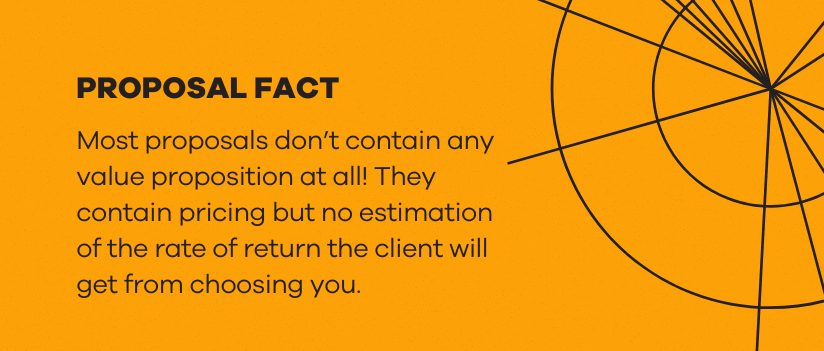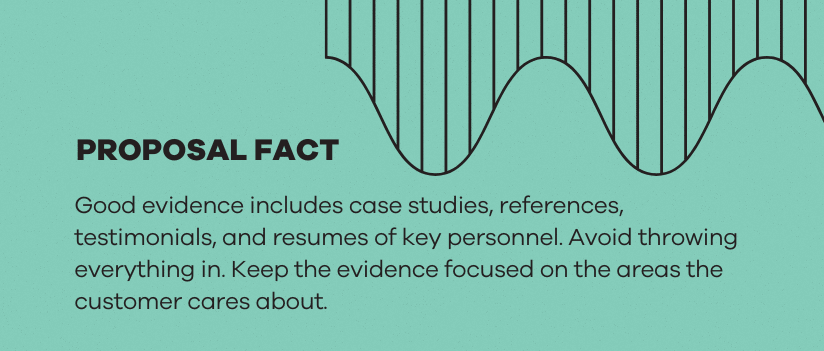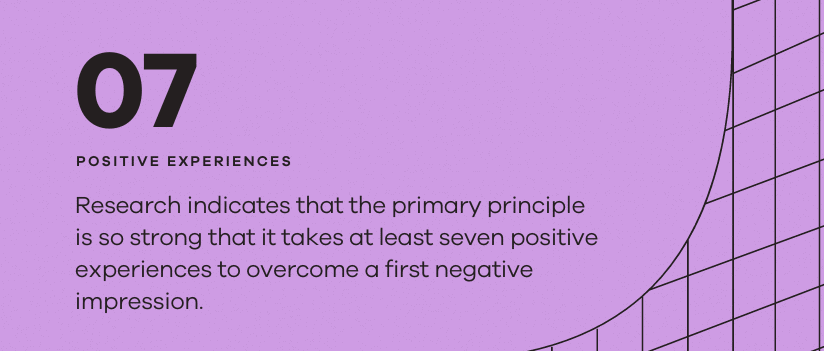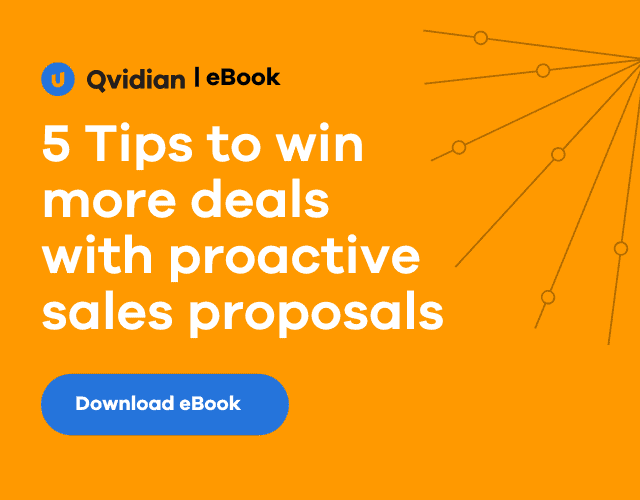Salespeople have to write more proposals (and better proposals) than ever before. As industries become more competitive and complex, customers have become more confused and more demanding. As a result, they are likely to listen to a presentation,
nod their heads, and mutter those dreaded words, “Sounds good! Why don’t you put that in writing for me?”
Although every proposal is different, there are specific approaches and techniques you can follow to ensure that your materials are effective selling documents. Your proposals must be more than a compilation of information, data, tables and boilerplate text. They must focus on the prioritized business issues the client cares about, the key strengths you bring to the business relationship, and the value-added benefits of selecting your company. This guide will walk you through the best practices in writing sales proposals that win—and aren’t a pain to read.
Why do customers want proposals?
One motivation is that the customer wants to compare offers from various vendors to make sure they buy the highest value solution based on your differentiators and value proposition. At a simpler level, they may just want to compare prices, clarify complex information, and gather information so that the “decision team” can review it. And let’s face it, sometimes they just want to slow down the sales process and they figure that asking for a proposal will keep the sales rep busy
for a few weeks. Whatever the customer’s motivation, the fact is that proposal writing has become a common requirement for closing business throughout the entire business world. Today, people who sell everything from garbage collection services to complex information technology have to create client-centered, persuasive proposals. Your objective in writing a proposal is to provide
your client with enough information—persuasively presented information—to prove your case and motivate the client to buy your services or applications. That sounds pretty straightforward. So why do the vast majority of proposals start out with the vendor’s company history? Does the author believe there is something so fundamentally compelling about their origins that clients will immediately be persuaded to buy?
Why do many proposals focus entirely on the vendor’s products and services but never mention how those products and services will help the client solve a business problem or close an important gap? Does the proposal writer believe that facts alone are enough to motivate a prospect to say “yes”? Winning proposals must be client-centered, not company- or product-centered. Most people buy because they’re looking for solutions to pressing problems, additional resources to close gaps, or the means to cope with difficult issues. What this means is that a proposal is not a price quote, a bill of materials, or a project plan. Each of those elements may be part of a proposal, but they are insufficient to make a persuasive, client-centered case.
What goes into a winning proposal?
In our experience, there are four categories of content that proposals must contain to maximize your chance of winning:
Evidence that you understand the client’s business problem or need
People view major buying decisions with anxiety. The bigger the decision, the greater the anxiety. They know
that even a well-intentioned vendor may end up wasting their time or their money or both. One way to reduce their anxiety and minimize their perception of the risk of moving forward with you is to demonstrate that you clearly understand their problems, issues, needs, opportunities, objectives, or values. Whatever is driving the client’s interest, you must show that you understand it and have based your solution on it.
A recommendation for a specific approach, program, system design, or application that will solve the problem and produce positive business results
It may surprise you to learn that most proposals contain no recommendation at all. What they contain instead are descriptions of products or services. What’s the difference? A recommendation explicitly links the features of a product or service to the client’s needs and shows how the client will obtain positive results.
A recommendation contains language that unmistakably shows that the vendor believes in this solution: “We recommend…” or “We urge you to implement…”
A compelling reason for the client to choose your recommendation over any others

This is your value proposition. Remember that you may write a proposal that is completely compliant with the customer’s requirements, that recommends the right solution, that even offers the lowest price, and still lose. Why? Because a competitor made a stronger case that their approach offered a higher return on investment, lower total cost of ownership, faster payback, or some similar measure of value that matters to the customer.
NOTE: Most proposals don’t contain any value proposition at all. They contain pricing but no estimation of the rate of return the client will get from choosing you. Failing to address the client’s needs and presenting a compelling value proposition are the most serious mistakes you can make in writing a proposal.
Evidence of your ability to deliver on time and budget
Most proposals are pretty good in this area. You want to show the substantiating evidence that helps answer the question, “Can they really do this?” Good evidence includes case studies, references, testimonials, and resumes of key personnel. You may also include project plans, management plans, company expertise, and other forms of evidence (white papers, awards, third-party recognition).

Avoid throwing in everything. Keep the evidence focused on the areas the customer cares about.
These are the essentials. Every scrap of data, every figure, and every paragraph in your proposal must contribute toward providing one or more of them because they directly address the three key factors on which every proposal is evaluated:
1. Responsiveness: Are we getting what we need?
2. Competence: Can they really do it?
3. Value: Is this the smartest way to spend our money?
Personalization
Customers expect more
Why? In part because they have been trained to expect more because of the business community’s emphasis on excellence in customer service, focus on “total quality,” and increased competitiveness of the market.
You can’t give customers a boilerplate proposal in today’s market. You have to include their name and their company’s name throughout the proposal. You have to acknowledge that you have listened to them and remember what you learned about them from previous interactions. Here are four conclusions that emerge from the reality of heightened
customer expectations:
1. Effective salespeople do not deliver one message
They do not treat customers as demographic units. They engage in conversations, they listen, and they view customers as individuals.
2. Effective marketing and sales require a combination of content and insight
You must have something worthwhile to say, and you need to say it in a way that shows Winning proposals must be client-centered, not company or product-centered.
3. Boilerplate messages may be worse than no messages at all
Why? Because they sound “canned” and undercut the rapport we’ve created with customers.
4. Use the customer’s language and refer to issues from their business and their industry
If you use the jargon they use and if you show familiarity in the cover letter and executive summary with what’s going on in their business and industry, they will assume that the entire proposal has been personalized to them.
Unfortunately, most salespeople resort to “cloning” as a means of getting their proposals done quickly. They borrow a proposal that somebody else has written for a different client, use the Find/Replace function in Microsoft Word to change the client’s name, and print it! That’s about as personalized as a can of spinach. (Plus they run the risk of having the wrong client’s name show up somewhere in that proposal. You can imagine what that does for rapport and credibility.)
The primacy principle
What is the “primacy principle”
It’s the tendency we all have to judge future experiences based on our first one. You might call it the principle of first impressions.
For example, if we go to a new dry cleaner in our neighborhood, and they end up losing a couple of our shirts or blouses and are rude to us, we’d have to be masochists to go back. It may be that they are normally very efficient and polite, and a combination of circumstances conspired to produce a negative impression on us. But we’ll never know. We’ll never go back.
Research indicates that the primacy principle is so strong that it takes at least seven positive experiences to overcome a first negative impression. (Or, conversely, seven negative ones to overcome an initial positive experience.)

So what does this mean for proposals? It means we must put the things up front in our proposal that the customer cares about the most. It means don’t send a boilerplate cover letter. Don’t write an executive summary that’s all about you. And don’t call your proposal something generic and pointless, like “Proposal.”
The primacy principle tells us that it’s vitally important to understand the client and then structure the message correctly.
Put the customer’s most important business issues first. Put the goal or outcome they want the most first in your list of outcomes. Structure your substantiation in terms of the things that matter the most to the decision-maker:
• Meeting a perceived need
• Delivering superior value or ROI
• Complying with the specification
• Proven vendor competence
Don’t guess! If you don’t know what the customer cares about, ask them. This is your value proposition. Remember that you may write a proposal that is completely compliant with the customer’s requirements, that recommends the right solution, that even offers the lowest price, and still lose. Why? Because a competitor made a stronger case that their approach offered a higher return on investment, lower total cost of ownership, faster payback, or some similar measure of value that matters to the customer.
The solution: Automate the process with Qvidian proposal software.
Qvidian will guarantee that every proposal you deliver addresses the customer’s business problems or needs, recommends a solution to meet those needs, and provides evidence that you can do the job on time and on budget.
Qvidian draws on the salesperson’s strength – knowledge of the client and minimizes their weakness– writing skills and formatting.


